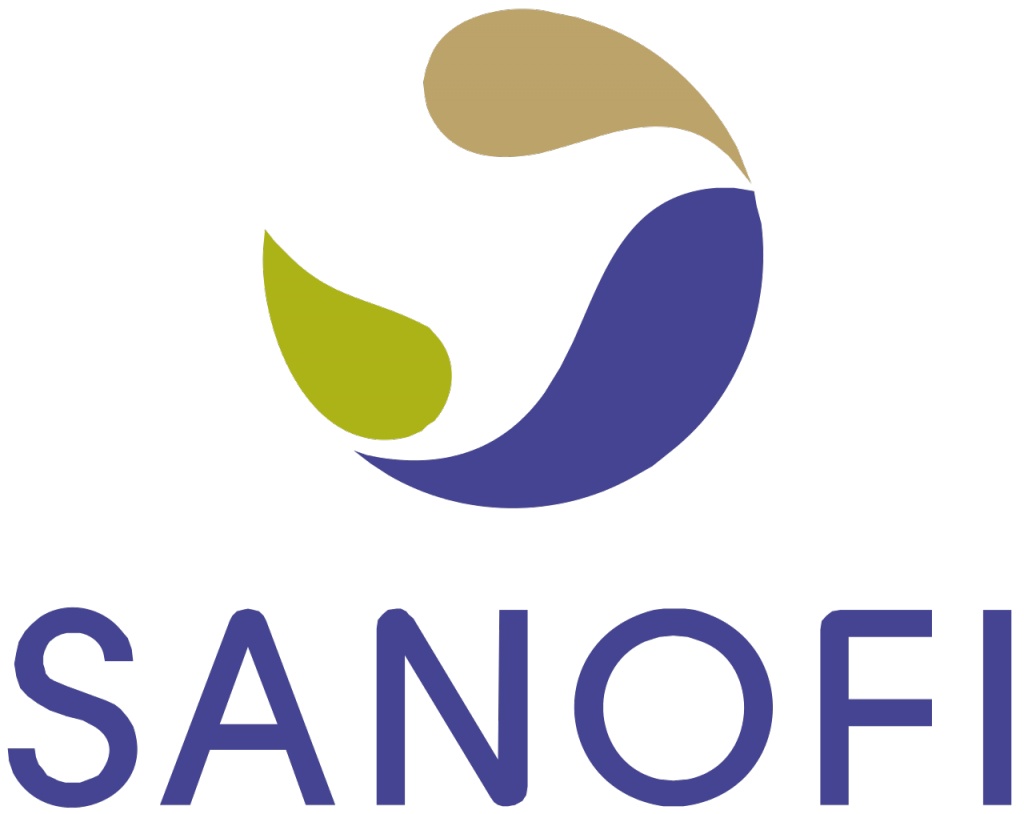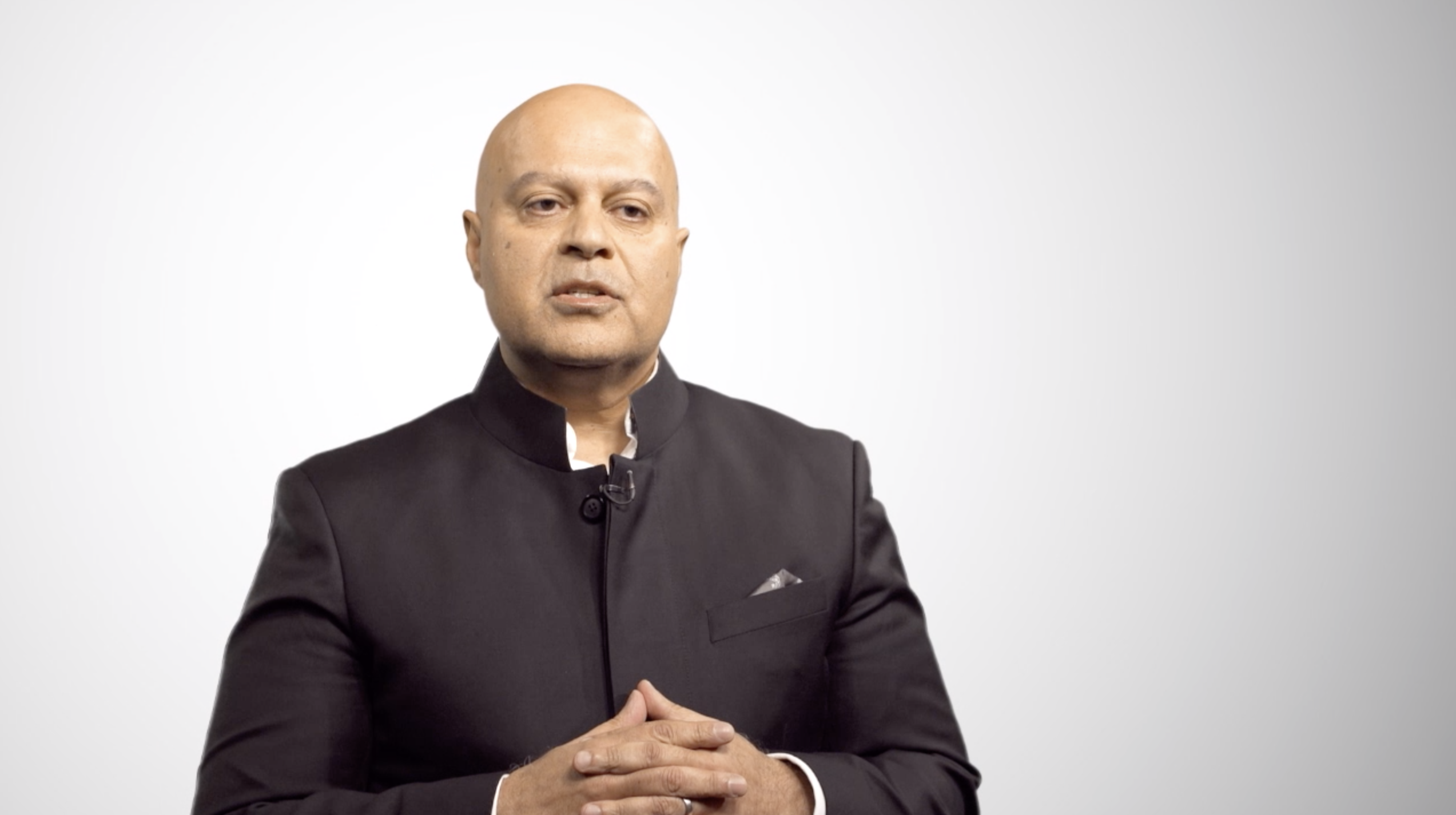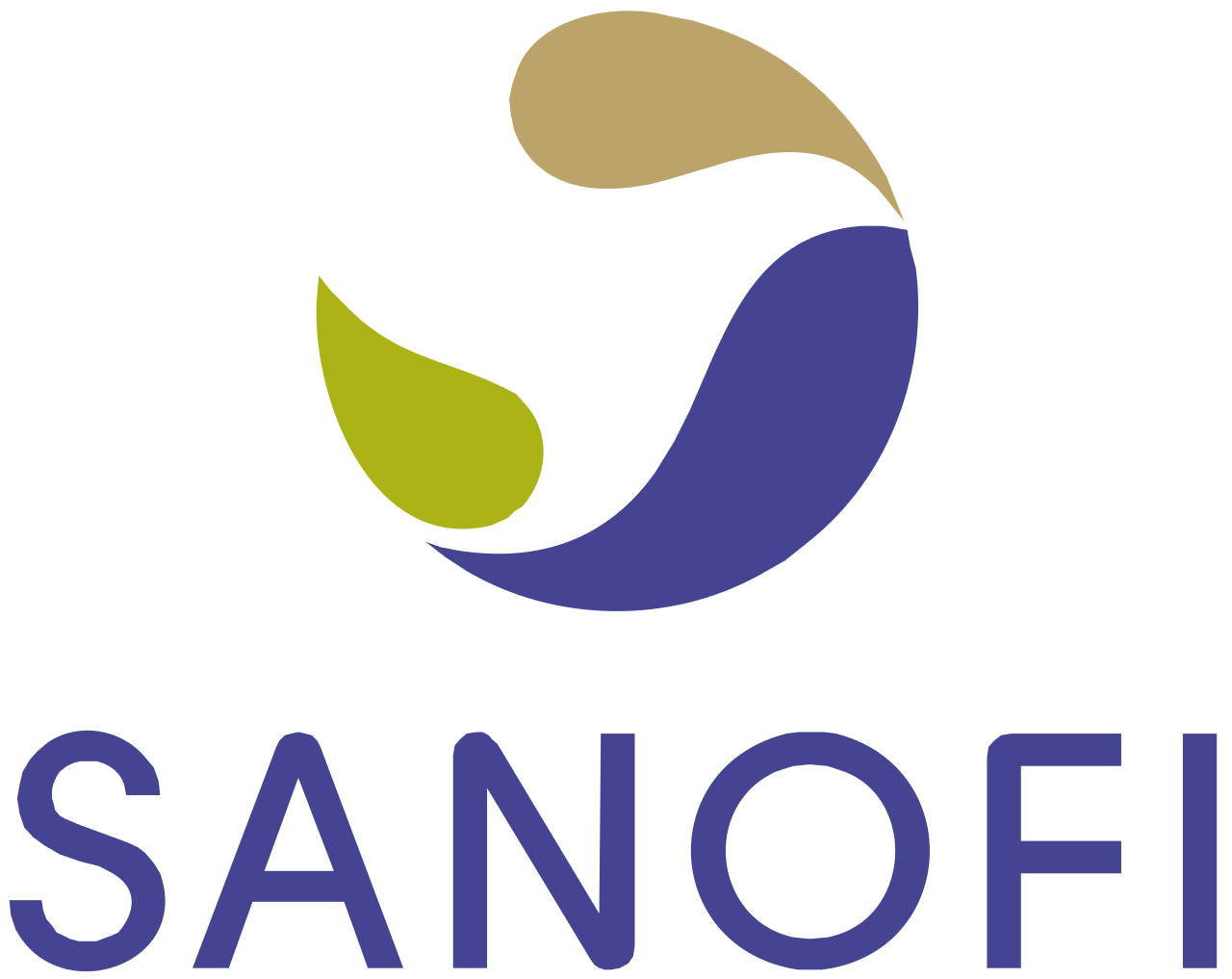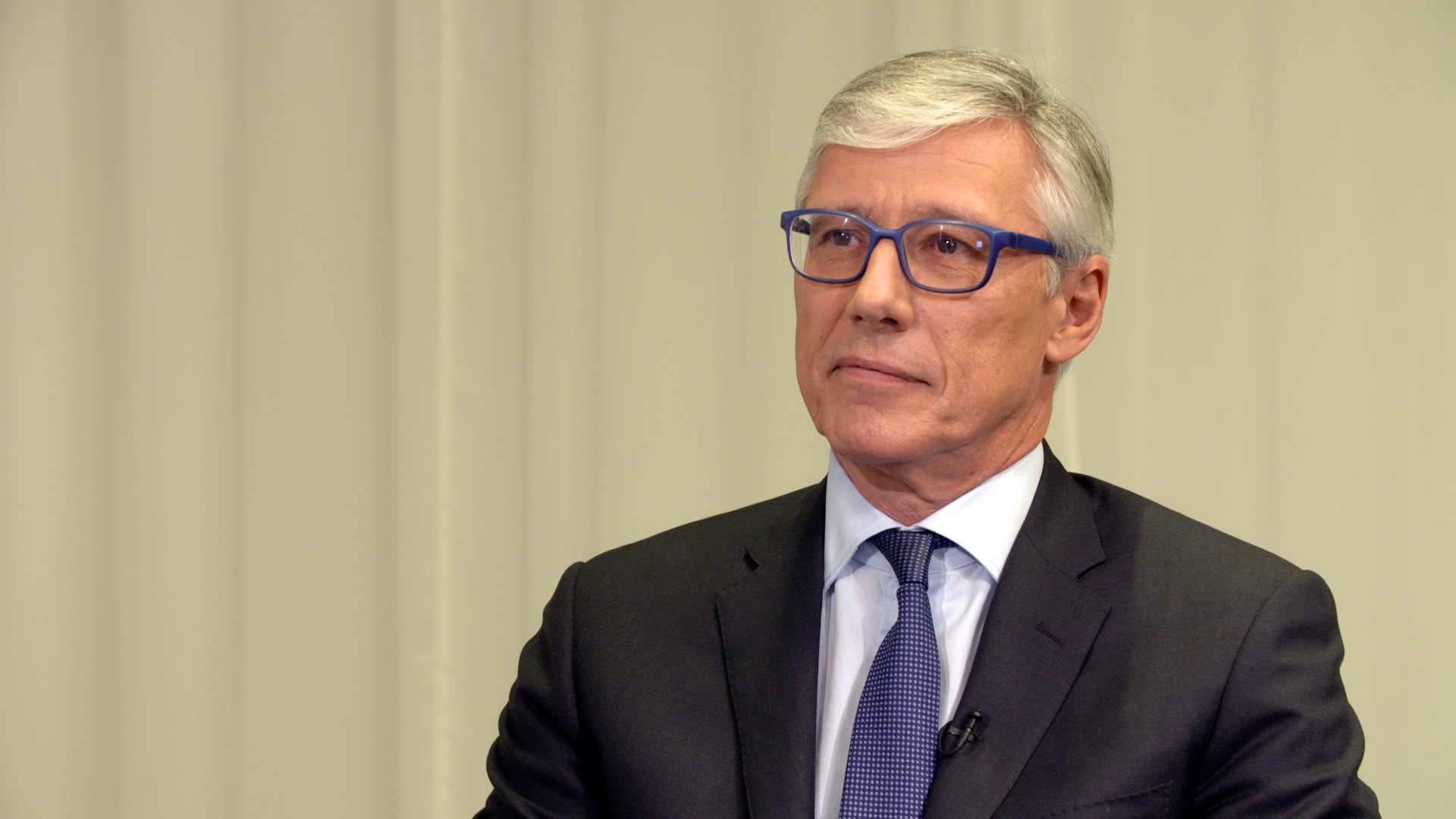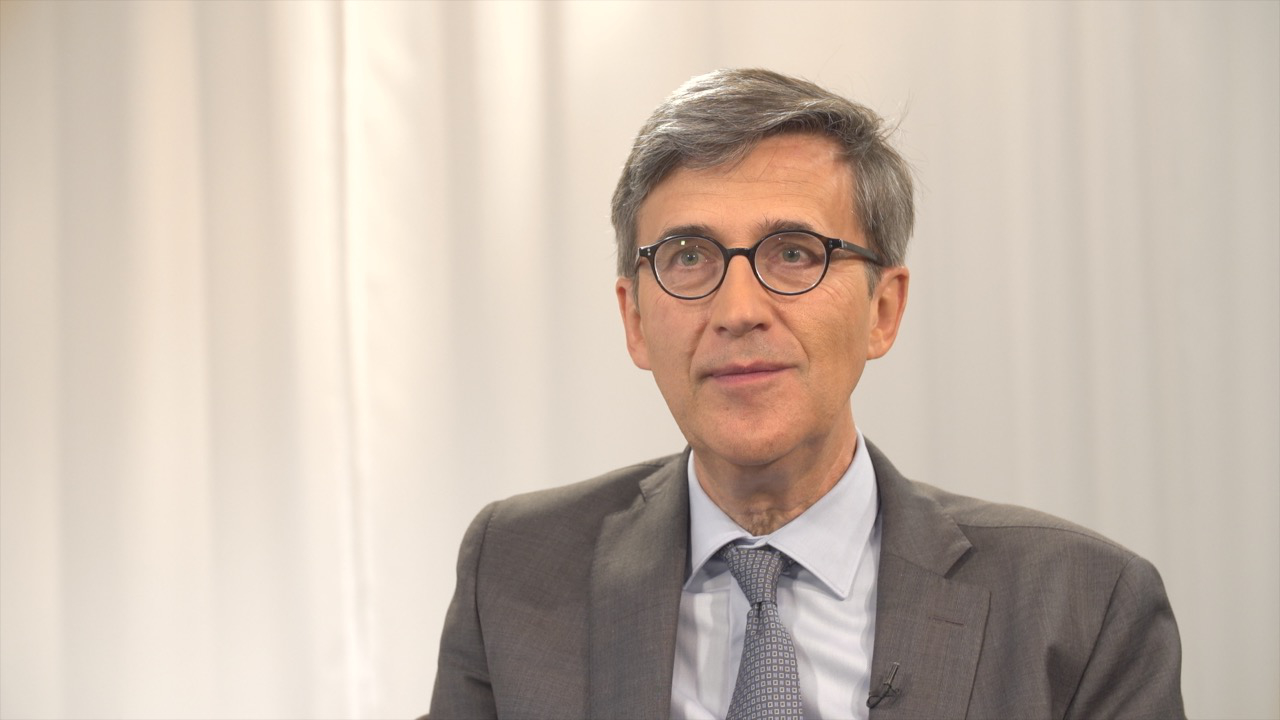EuroBusinessMedia (EBM): Sanofi, a global and diversified health care leader, reports results for the second quarter of 2011. Chris Viehbacher, welcome. You are the CEO of Sanofi, what are your comments on the Group's results in the second quarter of the year?
Chris Viehbacher (CV): Well, the second quarter was a busy quarter for us, a lot going on. Obviously, we were able to integrate and consolidate Genzyme for the first time, but equally, of course, we have seen the trend continuing from previous quarters where past drivers of the company’s growth are being subject to generic competition and are in decline. At the same time, the company’s strategy of developing Growth Platforms I think is showing a strong success. So if I put all that together, sales were about 8.4 billion euros. If we include Genzyme, they are up 6.9%; and if we don’t include Genzyme, they were down 4%, really because of the generic activity. But again, I think when you look at the performance of the Growth Platforms and the successful integration of Genzyme, I think the company continues to demonstrate very strong underlying performance also in the second quarter.
EBM: Can you expand a bit more on the performance of the Growth Platforms in this first half of the year?
CV: Well, Growth Platforms are clearly fundamental to the company’s strategy for dealing with the patent cliff. Our objective wasn’t just to replace the sales we were going to lose, but actually to build new sustainable franchises. And if I look at the totality of these, we saw very strong performance again in the first half of this year, with the Growth Platforms up 12.3%. Now if I take them individually, each of them have their own dynamics and, again, have been very successful. Diabetes is one where we clearly came back and put a lot of new investment in, and I’m very happy to see that Diabetes is growing at double digits again. If I look at Emerging Markets, where Sanofi is by far and away the leader in this industry, a very solid growth of 10.5%. Consumer Health, we have had a very successful launch of Allegra® this year. Consumer Health Care (CHC) is an extraordinarily important market for us, region by region; also in emerging markets, but clearly providing some new growth in markets like the US. And that growth was over 28% in the first half of this year. If I look at Animal Health, this is a very solid business, it’s one where the mega trends of the world – ageing population, emerging markets, need for quality food supply – all of those are coming together to really underpin an Animal Health business, so that’s growing at 6.7%. Vaccines is an extremely important investment in health care. We vaccinate over half a billion people every year and that business grew at 6%. And we shouldn’t forget that innovative products are still at the core of the business and we registered 227 million euros of new sales from innovative products. So all of them are performing well, I’m very happy with that performance, and I think that really is important as we look to a strong and successful future for Sanofi.
EBM: What is your update on your progress and growth dynamic in Emerging Markets, one of your growth platforms?
CV: So, if you think about Sanofi and where we really shine versus the rest of the industry, it’s got to be in Emerging Markets. The fact that we have local production, the fact that we’ve got a large product portfolio, the fact that we have been in many of these markets for decades, means we’ve got depth of management and a real ability to understand the specificities of those markets. And it’s huge – 2.5 billion euros in the second quarter of this year alone. Very strong growth and, of course, emerging markets are not all one country. China is a completely different dynamic than India, which is completely different than Brazil, and yet in each of those markets we are seeing extremely strong growth, and we are seeing a good mix of business. So our Diabetes business is growing nicely in emerging markets as well as in Europe and the US, with growth approaching 30%. But we’ve also seen a very strong growth in our Consumer Health Care franchise. The acquisition of two companies in China, for example, has helped. We are also starting to see now the transfer of products from other markets into emerging markets. We saw the launch of Lactacyd® in China, as an example. So this is an area where the world economies are really diverging. You’ve got older economies, which are stagnating in growth, and emerging markets, which are showing very strong economic growth. And we know that health care spend correlates with economic growth, so this is a great place for Sanofi to be, and Sanofi is extremely well positioned there.
EBM: Regarding Genzyme, can you tell us a bit more about the full strategic potential of the Genzyme acquisition? How were Genzyme sales in the second quarter and can you give us some more details about the Genzyme synergies?
CV: Genzyme is very clearly an important acquisition for the company, and I’m very pleased with the integration progress that we’ve made. We’ve also seen the success of the sales in the second quarter, so at constant exchange rates up 16%. Manufacturing recovery continues to progress nicely. So all of the indicators behind Genzyme in the second quarter were very positive, despite the timing of the integration. Now, if I look at the individual businesses, we have to say that Genzyme actually consisted of four businesses, plus you could say that there is a fifth new business, which is the Multiple Sclerosis business. And when we looked at each of those businesses, we basically said there were some businesses that really fit the Genzyme personalised patient approach model, and there were some businesses that really required economies of scale and that better fit within the Sanofi model. So, if we take the Renal business and the Biosurgery business, and the Oncology businesses, we have decided to integrate those within the existing Sanofi businesses. And there are huge sales synergies to come from this. We have seen a successful launch of Synvisc® in Japan. We believe that we can bring more investment behind Synvisc-One®
in the US, but there is also a huge opportunity in emerging markets, where we can bring much more of Sanofi’s geographic footprint and resources to really grow those businesses. Given that Sanofi has over 6,500 employees in China, we can really bring Sanofi’s presence and make a success of Genzyme’s products in China, as just one example. Now, the Personalised Genetic Health (PGH) business – which is really around the Enzyme Replacement Therapies (ERT), Thyrogen, rare diseases – nobody does this business better than Genzyme, and so we wanted to make sure that that business had a certain autonomy and has the right support. Now, we can support that business also in R&D. So one of the things that we did as an early decision was to put new money into some of the research programs that had not been funded within Genzyme to demonstrate our commitment to rare diseases. Multiple Sclerosis (MS) is a fabulous opportunity. Here we have two great new products, Aubagio™ and Lemtrada™, both of which are going to be filed within really the next 6-9 months. We have a product, Aubagio™, that is more likely to be used at an early stage, a very promising oral therapy in Multiple Sclerosis, and we have Lemtrada™, which has demonstrated a significant benefit in patients in Phase III in terms of preventing relapse. So there’s a whole opportunity to create a whole new franchise. So now we’ve spent the last quarter doing integration, we’ve dug deeper into the numbers, we’ve looked at the potential that we’ve just talked about. Our belief is that the synergies will actually be greater than we originally forecast. At the time of the acquisition in February, we announced synergies of around 600 million dollars; we now believe that synergies of around 700 million dollars are possible. So Genzyme is on track, and I think in good shape.
EBM: Could you update us on the situation with LemtradaTM? What is the timeline for filing?
CV: So, we’ve just recently announced the results of the CARE-MS 1 study. That’s one of two major Phase III studies which will support a filing for LemtradaTM. When we look at the relapse rate, we saw a reduction of 55%. Now, this is in comparison to an active treatment – this isn’t versus placebo, this is against Rebif® – and so these are extremely promising results. Now, we didn’t meet the second primary endpoint which was on disability. That seems to be because this is an early population, and in Phase II we saw the benefit on disability during the follow-up period. The second Phase III study we will announce towards the end of this year. Assuming that those results are consistent with the first CARE-MS study, then we would expect to be able to file in early 2012, and I would remind everybody that we already have a fast track approval granted for this product. So I think this could be quite an exciting opportunity for MS patients. We’re looking forward to being able to launch this.
EBM: What is your update on your Diabetes division and Lantus® performance specifically?
CV: Diabetes is, of course, one of our core Growth Platforms, and I was very pleased to see double-digit growth up in the quarter, 12.4%. This is an area where the company is making and has made significant investment. So we saw a very good performance of Lantus®, up 14.5% in the quarter. You know, we have also made a bigger effort to make sure that patients could benefit from the more convenient SoloSTAR® device. And we now have new patients start at about 46% on SoloSTAR® versus under 40% about 18 months ago. We have also made much more of an effort on Apidra®. I think that’s really an extremely important product as a short-acting product. We recorded sales in the quarter of 53 million euros and up 29%. And, of course, we always have to look to the future, and our GLP-1 product, Lyxumia®, is making good progress and we were able to provide some very strong results at the ADA Conference earlier this year. So Diabetes is functioning on all cylinders, it’s going along strongly. We are making investments, but this is an extremely important business for the company for the future.
EBM: Today, your Consumer Health Care (CHC) business is spread across a large number of local brands. Do you believe that, in the medium term, your interests could better be served by building up a single global CHC division?
CV: The first thing I think we have to say is that we’ve come an awful long way in Consumer Health Care. We recorded sales of 644 million euros in the quarter for Consumer Health Care sales. That’s up 17.6%. When I think about where we started, we have really built this business. We had no presence in the US. We acquired Chattem. We’ve been able to switch Allegra®, and already in the first half of this year, Allegra® has achieved sales of 143 million euros, and we are already outselling the Number 2 brand in this category, which is Zyrtec®. We are also making good progress in transferring products between markets to become more globally present. In China, for example, we had no presence at the beginning of 2010. We acquired BMP Sunstone. We developed a joint venture with Minsheng Pharmaceutical and now we are an important player in the CHC market in China. And because of that platform we can do things like the launch of Lactacyd® in China. Now we are looking at Europe, and we have been able to attract an extremely talented new executive for that area. And we are looking at how we develop those brands in Europe. So as we spread and build our business, we are becoming an increasingly global presence, but we should always remember that Consumer Health Care is still very close to local customers, there is still a very strong regional capability. And so it really helps us in emerging markets, but it can also provide some new and sustainable growth opportunity in some of our more traditional markets. So I’m very happy with the Consumer Health Care performance.
EBM: In Animal Health, is Frontline® maintaining resilience in spite of the appearance of generics?
The answer is yes. Frontline® is clearly a core franchise within our Animal Health business. If I look at the overall animal health business it grew at 6,7% for the first half. Frontline® recorded record sales in the first half of over 450 million euros. This is an extremely important brand because it is the only brand in the entire animal health space that does over a billion dollars. So this is the only blockbuster in animal health. There have been introductions of generics, in Europe in particular but we have still been able to maintain over 90% market share. We have been able to defend our intellectual property in the United States. We have also launched a further line extension for dogs which is called Certifect®.
If you step back and look at animal health and you think about the growing population, and as people move from villages to cities for example in emerging markets, you see even a growing pet market in emerging markets. So as you see growing economies, as you see growing populations and particularly for the production animal side, things like vaccines for chickens and for cattle, there is a growing importance of both increased food supply and increased quality. So all of the megatrends really support an investment in animal health and I think Sanofi and Merial are extremely well positioned within this. Clearly it’s a business that has been driven more by pets than by production animals in the past. Now that Merial belongs to our group at 100% we are undertaking a strategic review to really understand how we can best grow this business more globally and with a more balanced product portfolio.
EBM: How has the Vaccines business performed this first half? Where do you stand today on Seasonal Flu deliveries?
CV: We sold about 1.3 billion euros in the first half of 2011. That’s up 6% if I eliminate the one-off sales that we had in 2010 of the H1 pandemic flu vaccine. When I look at the business overall clearly there is a seasonal aspect to vaccine sales largely because of seasonal flu. So in the first half of the year we sell seasonal flu vaccine in the Southern hemisphere and we had a record season this year with sales of 158 million euros. Now we look forward to the flu season in United States and Europe and sales are off to a good start. We already had our first shipments on July 18th.
Sanofi also spends an awful a lot of time thinking about life cycle management and really improving in this space. Last year we had a lot of success with selling higher dose flu vaccine for senior citizens. This year we are introducing another innovation which is in intradermal device for Fluzone® in the US. This is just yet another area where we continue to innovate in this space and I think this is benefiting the overall business. Again vaccines are an extremely important investment in health care. We live in an environment where there is more sensitivity to cost. The best investment you can ever make in healthcare is preventing someone from getting sick in the first place. That is why we are very proud of the fact that we are able to vaccinate over 500 million people every year with a vaccine from Sanofi Pasteur.
EBM: Regarding new products, you have a few regulatory filings coming up. Do you think that there is at least one of these products whose potential has not been fully appreciated by the market?
CV: You know if you ask most people, they think actually Sanofi is a company that does not have much of a pipeline. Most people would be surprised to find out that we actually have six NME fillings in the next nine months. I have been in this industry a long time. I can’t remember any time when a single company had this many new molecules to go file. So I think there is an underestimate of what we have in our pipeline. So what do we have? There are different size products and different potentials. We have Kynamro™, most people have known this up to now as mipomersen. This is a product that has been developed for familial hypocholesterolemia. We have Visamerin®, what we used to know as semuloparin which is being used for venous thromboebmolism associated with treatment of chemotherapy in cancer patients. We also have Aubagio™ which is an oral therapy that we have developed for multiple sclerosis. This has shown a very strong benefit and I think we will probably position for earlier stage patients. We have got Zaltrap™, this is our VEGF-Trap which has shown very strong results in colorectal cancer. We of course have our GLP-1 which we now call Lyxumia® which will add to our diabetes franchise. And of course we have Lemtrada™ which came with Genzyme which of course is also an extremely promising new therapy for multiple sclerosis.
When I look at most forecasts for the company, people think about the growth platforms and that is absolutely right, but we have not abandoned innovation and I believe that when we did our portfolio review two and a half years ago, we stress-tested our portfolio. And what actually I see is very positive, is that the products we decided to keep in the portfolio at that time are now coming through into filings. So R&D is still one of the hardest parts of our business but I think Sanofi is making good progress in this area and we are probably a lot better than most people think.
EBM: And finally, now that the Genzyme acquisition is complete, what is your updated guidance for the full year 2011?
CV: First let’s think about some of the factors that affect this. The number one factor is of course the H1N1 sales. These are the pandemic flu vaccine sales which occurred in the first half of 2010, and which of course have not occurred in 2011. The second of course is that we have significant erosion of generic products which is continuing. In the Q2 alone this was around 800 million. But equally we have seen very strong performance of our growth platforms and we will consolidate Genzyme for two quarters, where we only consolidated for one quarter in the first half of this year. So when I take all of that together, a very solid underlying performance of the company overlaid by the H1N1 and generic activity, we now project business EPS to be 2% to 5% lower than 2010 at constant exchange rate.
Most investors are interested in what the longer term outlook for Sanofi is. And of course we are going to do an investor seminar on the 6th of September 2011, and we invite investors to attend that.
EBM: Chris Viehbacher, CEO of Sanofi, thank you very much.
CV: Thank you, Adrian.

